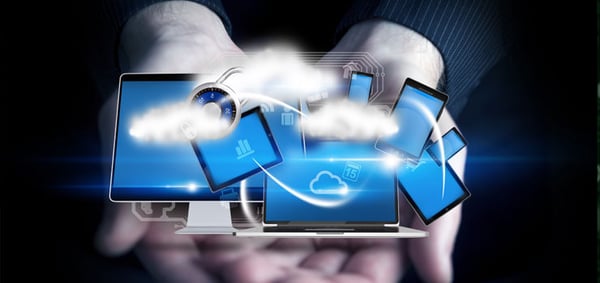Its all about Data
The Modern-day IT workforce of Enterprise Asset Management (EAM) business are progressively aware of the need to have access to on demand data. Emergence of smart phones and tablets/iPads has made the need for Mobility become more than a passing whim within asset management and field services systems.

Growth of mobility in the EAM segment has allowed field crews to intermingle directly with EAM systems on handheld devices, real-time update of data and usage of digital forms bring enormous benefits to an organization. Mobile EAM can be used across iOS, Android, and Windows devices, functioning in both online and offline modes. Additionally, usage of mobile solutions improves the data quality. The real time data capture by field crews ensures more accurate data being stored in the asset management system, unlike manual data entry, using paper-based reports by clerical personnel, which leaves data vulnerable to mistakes.
Making life more productive for EAM uses

With contemporary mobile devices and ruggedize versions of these devices, life can be easier and more productive for EAM users. Maintenance workers can have access to work information, safety alerts, lock-outs, asset hierarchies, prior work history on the asset, work related documents, inventory data, and similar information right at their fingertips. EAM Mobility also has a wide variety of features like GPS, GIS, RFID, Voice to Text and barcode/QR code scanner, giving the field technician the ability to accessing data and report faults anytime, anywhere.
Risks and Opportunities

EAM mobility has introduced both risks and opportunities within the enterprise asset intensive organization. With the need to store highly sensitive information of their various sites and locations including large data sets from their complex assets, which ensures preventative and predictive maintenance, organization should create a formal device policy that educate staff on both security risks and best practices. For this organization need a Mobile Device Management (MDM) solution.
Mobile Device Management Essentials

MDM software gives IT managers central control of devices in a corporate network, including device data, security, applications, web activity, and data transmission (depending on how the system is configured). It lets facility staff enjoy the versatility and efficiency of mobile devices without putting corporate data at risk.
Here are four essentials of MDM that are particularly useful:
- Device security: Protect devices from unauthorized access by enforcing lock screen passcodes, installing mobile malware detection software, and setting up device-level encryption. Many solutions also offer built-in messaging platforms so users can send secure messages without risking over-the-air interception.
- Remote management: If a device containing business application information is lost or stolen, you can erase the data or lock the device until it is found. Some systems may give you the option to erase only sensitive data, rather than wipe the whole device.
- Application control:If an outside app is tainted by malicious code, it can siphon data from other apps on the device, which (again) jeopardizes data. Application control lets you decide which applications to permit and which to blacklist or disable. In addition, you can use “containerization” to partition an area of each device for dedicated work-use; that way, untrusted third-party apps are kept separate from your EAM mobile application.
- Reporting: Finally, MDM reporting tools give you real-time visibility into your organization’s mobile environment, including device status, user information, log-in attempts, and compliance with password policies.
Considerations

Organizations must consider a few things when looking for an MDM solution, such as platform compatibility as some solution may only support certain types of Operating Systems (OS), in this case the organization should consider implementing a company/corporate owned device (COD) policy. However, in some cases companies may adopt to bring your own device (BYOD) policy.
Other thing which organizations must factor in on how to fit MDM in larger IT infrastructure. If an enterprise has a small practice with no centralized IT team then it’s worth considering a standalone solution which is affordable and low in maintenance. On the other hand, larger enterprise will have more devices, more users, and a multi-level, multi-site needs that call for greater synchronicity. Instead of a discrete MDM solution, this may warrant an IT management suite that includes MDM alongside other integrated tools for configuration management, helpdesk ticketing, and security.
Let BPD Zenith help ensure your organisation experiences long-term success with their EAM Mobility solution. Contact us to find out how.





